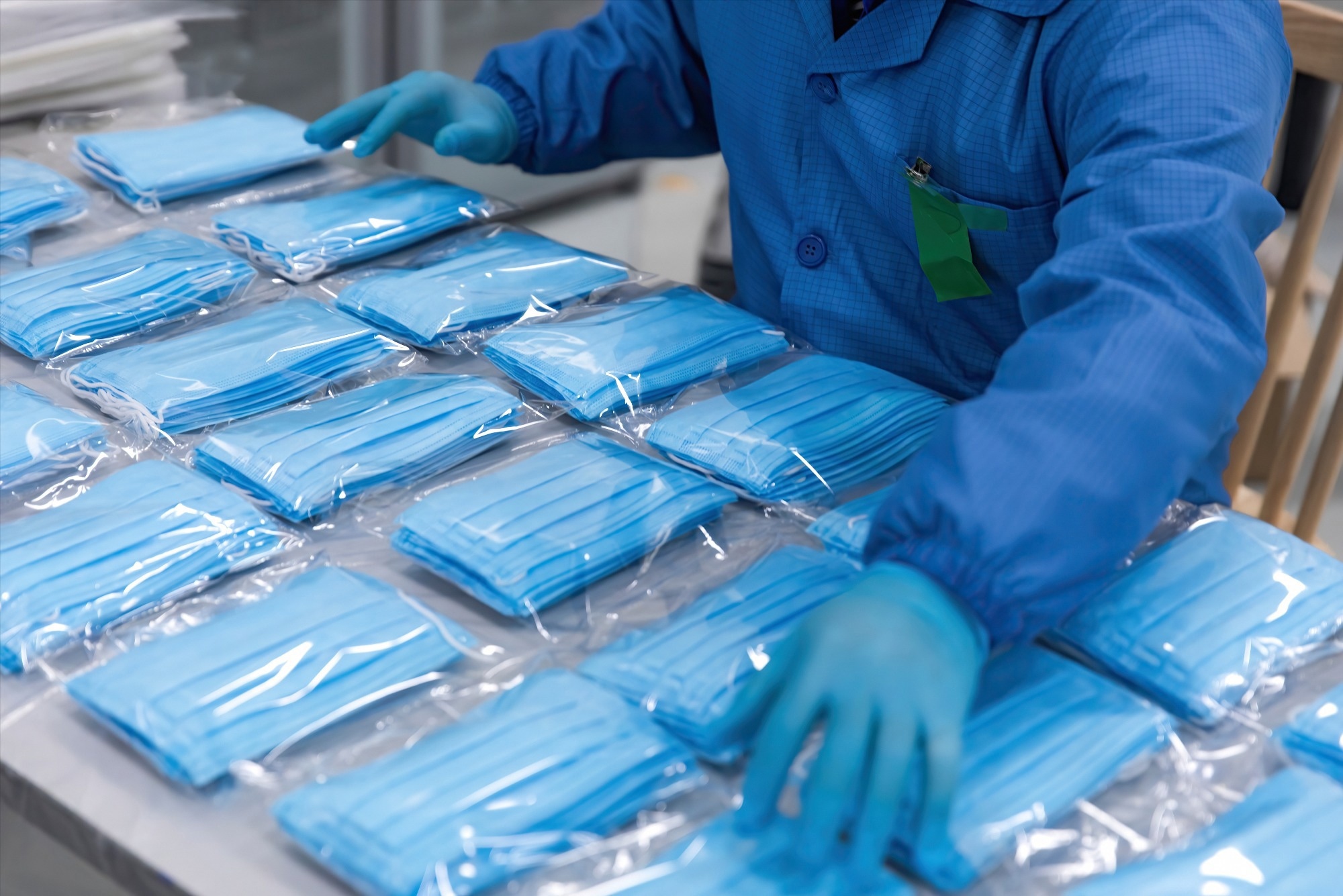Researchers have developed a novel way to repurpose disposable face masks into lightweight, insulating construction materials using geopolymer technology.
 Study: Recycling Face Mask Fibers in Geopolymer-Based Matrices for Sustainable Building Materials. Image Credit: InkheartX/Shutterstock.com
Study: Recycling Face Mask Fibers in Geopolymer-Based Matrices for Sustainable Building Materials. Image Credit: InkheartX/Shutterstock.com
A recent article in Ceramics explored an innovative approach to upcycling disposable face masks, produced in massive quantities during the COVID-19 pandemic and now stockpiled across public institutions. With many of these masks headed for landfills after expiration, researchers examined whether shredded mask fibers could be incorporated into geopolymer matrices to create sustainable, high-performance building materials.
Background
The surge in face mask production during the pandemic was critical for infection control, but it also contributed significantly to medical waste. Most disposable masks, made from non-biodegradable materials like polypropylene and polyethylene, end up in landfills. Compounding the issue, many institutions now hold large reserves of masks with limited shelf lives.
Efforts to repurpose this waste through recycling or upcycling - especially for use in construction or insulation - offer a potential path forward. These initiatives could help reduce landfill loads and support sustainability goals by improving energy efficiency in buildings.
Because of the synthetic composition of face masks, geopolymer-based materials present a promising alternative to traditional cement. Embedding shredded mask fibers into geopolymer matrices not only helps divert waste from disposal but also enhances the development of durable, insulating materials such as building panels.
Methods
Researchers collected unused FFP2 face masks from a local school’s storage. The entire masks, including strings and nose pieces, were shredded using a cutting mill. The resulting fibers were then sieved through 2 mm and 6 mm screens to standardize the size.
To understand the material composition and structure, the team conducted environmental scanning electron microscopy and Raman spectroscopy analyses. They also measured physical characteristics such as density, porosity, and mechanical and thermal properties to assess the impact of fiber size on the geopolymer samples.
Geopolymer matrices were created using commercial metakaolin and K2Si2O5 as an activator. Mask fibers were added in concentrations of 1 %, 3 %, and 5 % by weight. A control sample without mask fibers was also prepared. After two minutes of mixing, the geopolymer mortar was molded into standardized sample sizes for three-point bending, compression, and thermal conductivity tests after a 28-day curing period.
Results and Discussion
The results suggest strong potential for insulation and energy-efficient applications. There was a clear relationship between the materials’ thermal and physical properties. As more mask fibers were added, sample density dropped - an advantage for applications where lightweight materials are beneficial.
Thermal conductivity also declined as mask fiber content increased in the non-foamed geopolymer samples. Smaller 2-mm fibers proved more effective than 6-mm fibers at disrupting heat flow, improving insulation. When H2O2 was used to foam the samples, both density and thermal conductivity were further reduced.
Compared to standard insulation materials like rock wool and polystyrene, the foamed geopolymers offered competitive thermal performance while reusing waste. Though they didn’t match the ultra-low conductivity of rock wool, they outperformed standard concrete and brick in thermal efficiency.
The findings aligned with previous studies on fiber-reinforced geopolymer composites. Interestingly, even though these were not commercial polypropylene fibers, the shredded mask fibers still improved flexural strength, particularly at a 3 % weight ratio, while contributing to better thermal properties and addressing environmental concerns.
Conclusion
This study effectively demonstrates the potential of incorporating shredded face masks into geopolymer matrices to enhance both mechanical and thermal performance. Flexural strength peaked with a 3 % concentration of 2-mm fibers, while compressive strength was highest at 1 %, suggesting that even small additions can reinforce the material without compromising integrity.
Thermal conductivity saw the most improvement at a 5 % concentration of 2-mm fibers. Foaming the geopolymer with H2O2 further reduced density by up to 67 % compared to the reference sample.
In short, upcycling face masks in this way not only addresses a growing waste issue but also creates lightweight, energy-efficient materials suitable for insulation and other construction applications.
Journal Reference
Ercoli, R., Stabile, P., Ossoli, E., Luconi, I., Renzulli, A., & Paris, E. (2025). Recycling Face Mask Fibers in Geopolymer-Based Matrices for Sustainable Building Materials. Ceramics, 8(2), 54. DOI: 10.3390/ceramics8020054, https://www.mdpi.com/2571-6131/8/2/54
Disclaimer: The views expressed here are those of the author expressed in their private capacity and do not necessarily represent the views of AZoM.com Limited T/A AZoNetwork the owner and operator of this website. This disclaimer forms part of the Terms and conditions of use of this website.